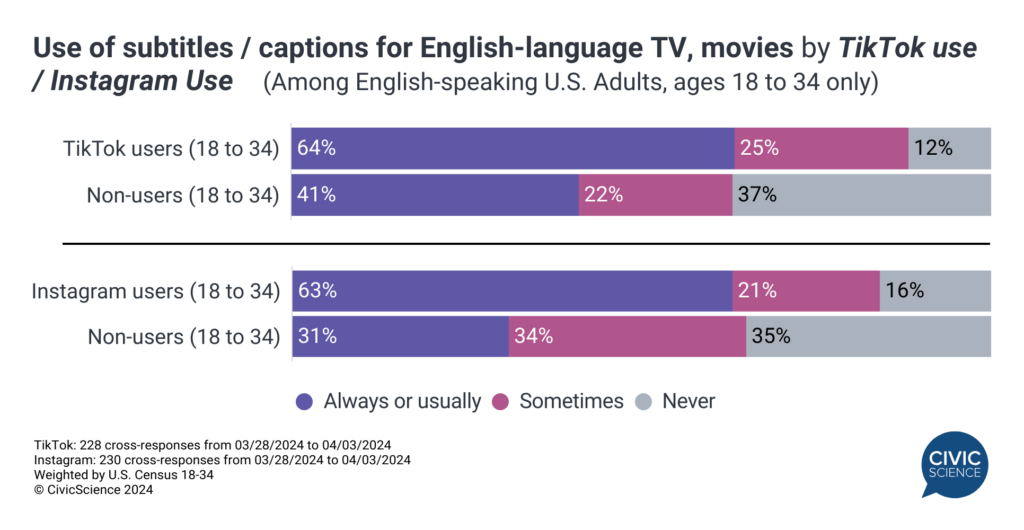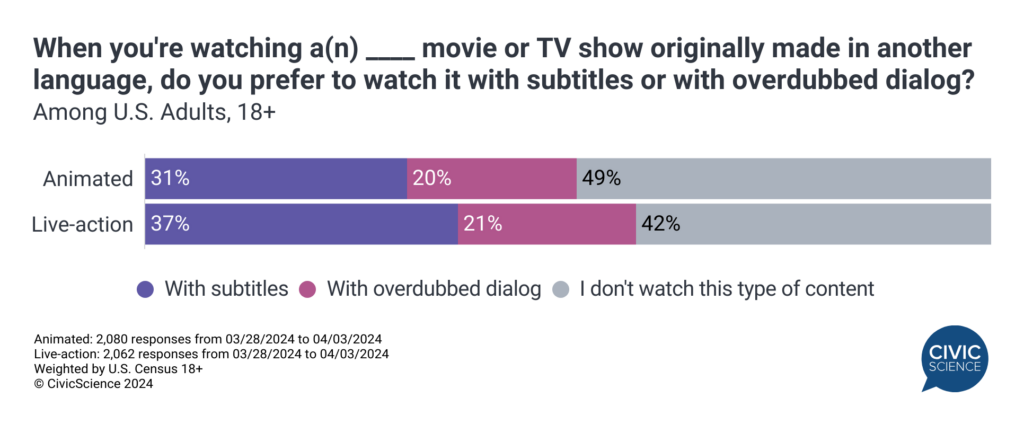At first glance, one might assume that using subtitles or closed captions on English-language TV and movies might be centered primarily among older Americans. But among English-speaking U.S. adults, new data from CivicScience show that younger people — Millennials and Gen Z under age 35 — far outpace the older generations when it comes to subtitle usage for English-language programs.
Put simply, the data suggest that young people just like using subtitles and captions for movies and TV, even when they don’t necessarily “need to.”
In a recent survey of 1,774 English-speaking U.S. adults, CivicScience found that 36% say they ‘always’ or ‘usually’ use subtitles or captions even when the audio of their TV and movies is in English. That figure skyrockets to 56% among the under-35 cohort, with only 21% saying they ‘never’ use subtitles or captions. Meanwhile, only 1-in-5 of the over-55 age group said they typically watch English-language programming with subtitles. Gen X respondents stood right in the middle.

Join the Conversation: Do you typically watch TV / movies with subtitles or closed captions on even when they’re in English?
The TikTok Effect?
Is social media ultimately behind the trend of younger generations reading text while watching video? It’s possible. Even when looking only at respondents aged 18 to 34, those who use TikTok – which has “auto captions” that can accompany its short-form videos – are far more likely to turn on subtitles for movies and TV. The same principle applies to 18- to 34-year-old users of Instagram compared with their anti-Insta peers. (The Instagram Reels feature also shows short-form videos with automated captions, just like TikTok.)

Subtitles Vs. Overdubs
When it comes to movies and TV produced in a foreign language, U.S. adults would generally rather watch with subtitles than with overdubbed audio. This goes especially for live-action content, which is marginally more popular than non-English animation.

Will it become typical to watch English-language TV and movies with subtitles on in the future? The data suggest that subtitles and captions are already the norm for a majority of young adults, a phenomenon that may be influenced by their experience on social media.
Discover unexpected consumer insights and learn how your brand can benefit from the 4+ million daily survey responses available in the InsightStore™ – get started.








